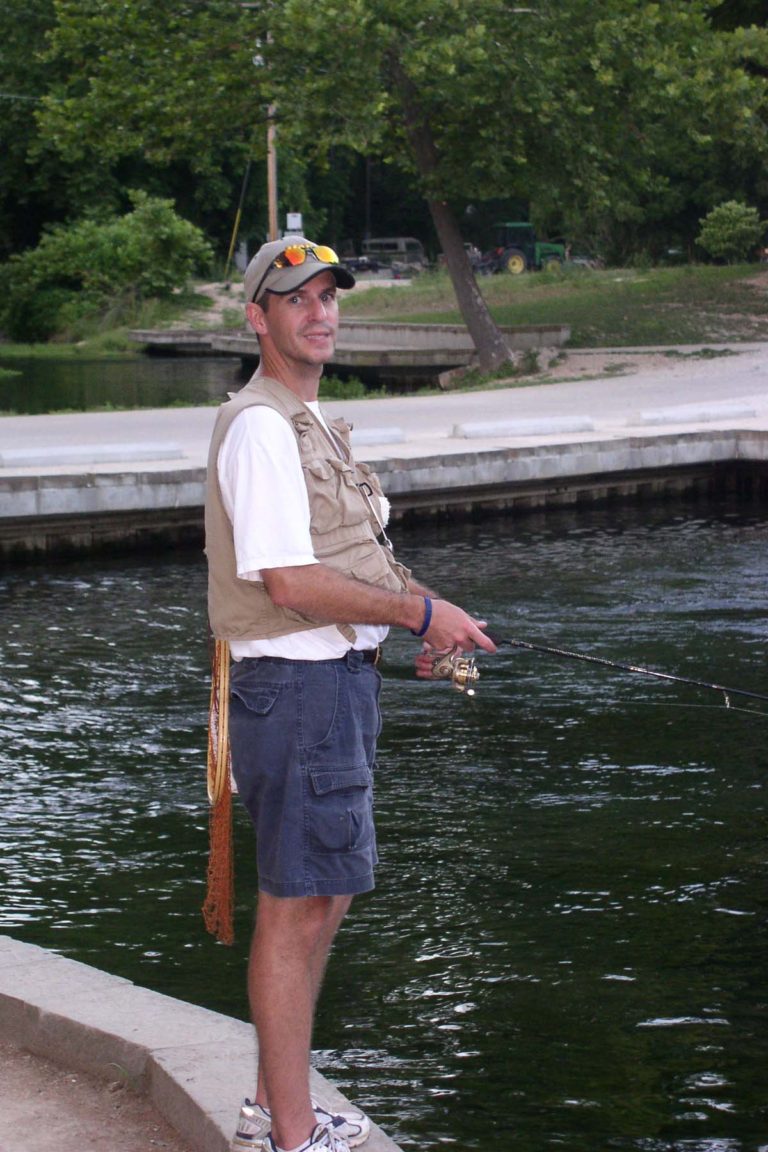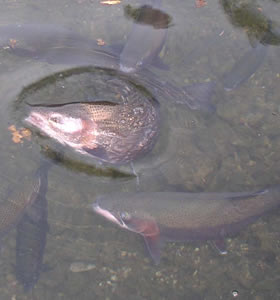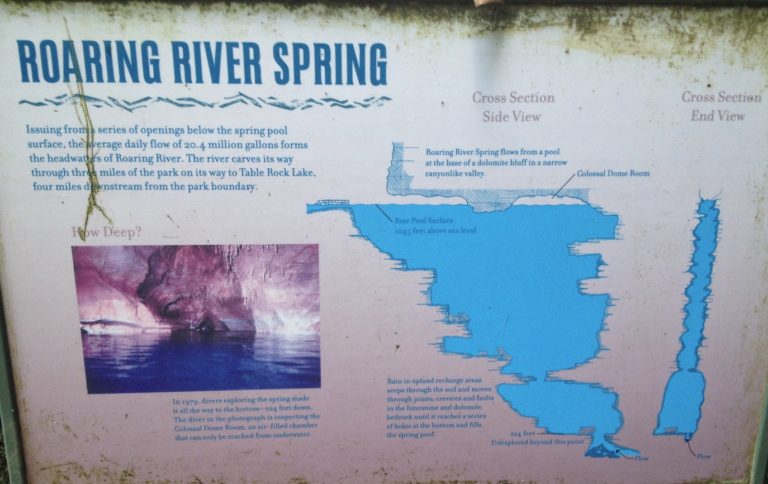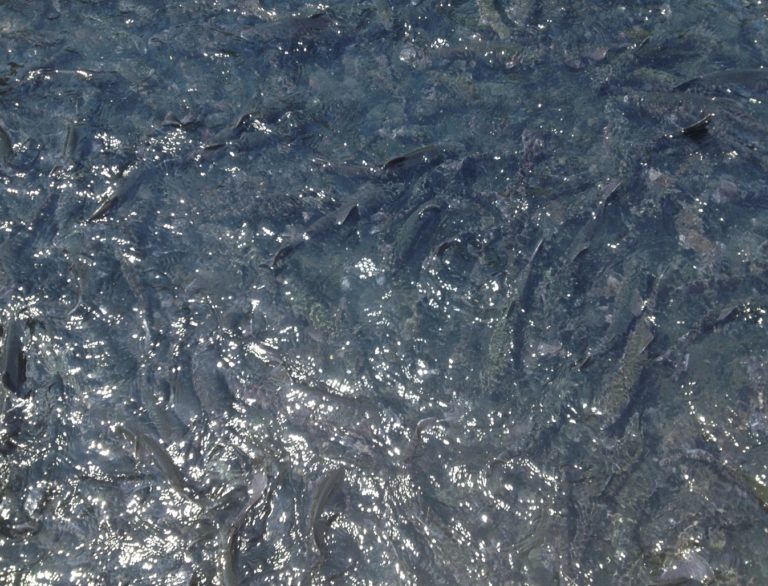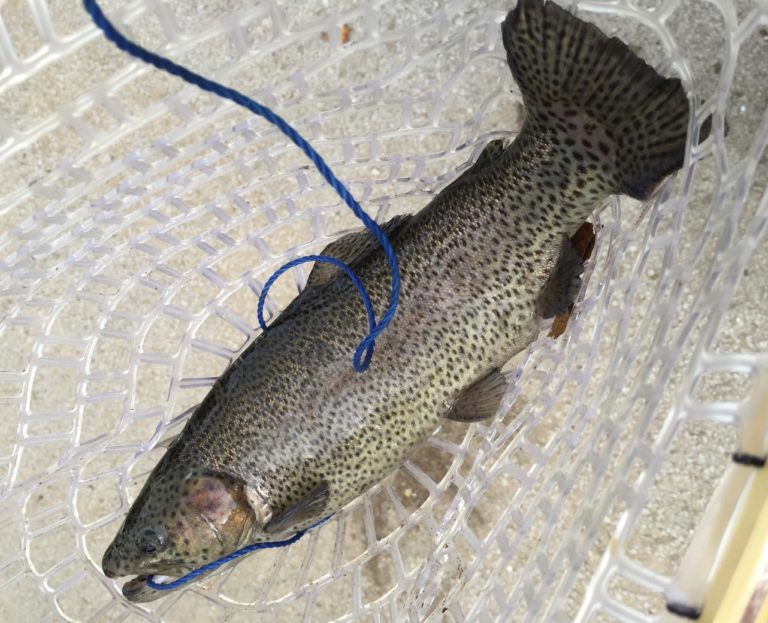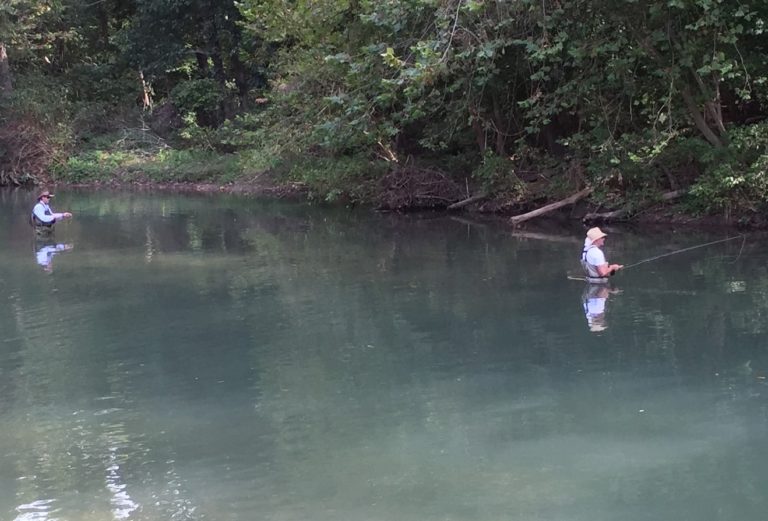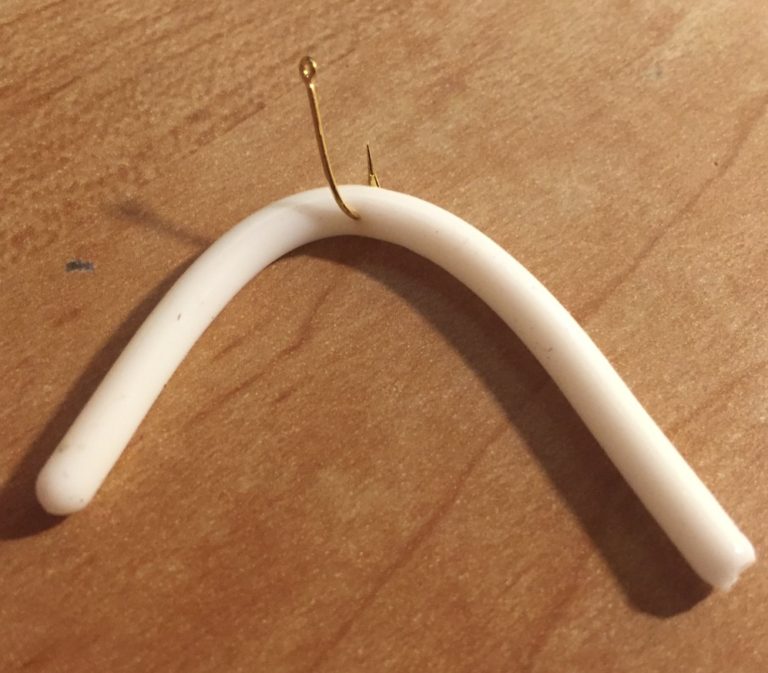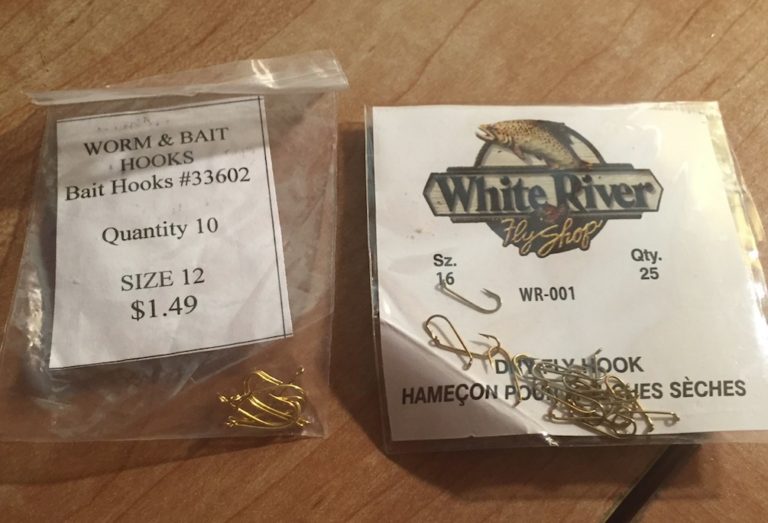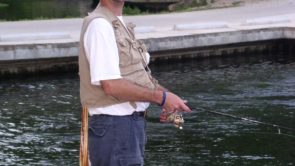-
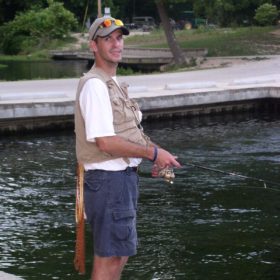
Getting Started Fishing Roaring RIver
Easy Fishing the Roaring River without a Fly Rod
The Roaring River offers trout for the taking, for experienced and NEW fishermen alike. But it does take some time to learn the habits and tenacity of the Rainbow Trout. Dropping your 12 lb. test line with a worm and bobber will temp most any fish, but at Roaring River State Park, the river is divided into zones. In the first zone, where most of us new fishermen and women will start out (You can see the most fish here!), you can only fish with artificial bait. This means no worms, no corn. No nothing, except lures and plastic.
Choosing Your Lures
What lure will bring in the fish? Trout go for different lures, but what seems to work from my experience, are the plastic worms, grubs, and eggs. And spinners like Mepps, and my favorite, the Panther Martin Rainbow Trout lure. I’ve caught trout with this lure every time I’ve fished it. I’ve also had a few of these end up in overhanging branches on the banks, but that’s another story. Spinner bait like this one seems to work best when the river opens for fishing sometime around 6:00 am or 7:00 a.m., depending on the season. The hungry trout, ready for anything to drop into the river, snap these up.
But after twenty minutes or so, they seem to be no longer interested in the spinner, and I switch to a plastic lure, usually a worm.
How do you rig them?
The first time I fished Roaring River, I was a foolish bass fisherman with no idea of the wiley trout. I had my standard fishing pole with 10 lb. test line, complete with sinker and lure. I cast my spinner bait (I had read that these worked well at the river) and believe it or not, I pulled in a trout within the first ten minutes of fishing. That poor fish must have been starving. After that, I fished all day without another catch.
Why? Trout are smart fish. They don’t like strange things in the water, and thick heavy line is strange. You need to fool the fish. You need ultralight fishing line on your pole. Load it with 2 lb. test line, available at the Park Store nearby. Or, buy twenty feet or so of 2 lb. line, and tie it to your heavy line.
So, you’ve put 2 lb. line on your pole, you put on a tiny hook, and a plastic worm. You try to cast, but with very little weight, bingo, birdsnest! You will probably need to invest in an ultralight fishing pole to cast the ultralight tackle.
You can, of course add very tiny sinkers, but if you do, make sure they are nowhere near your hook. Those trout are sneaky, and can spot anything unnatural. Speaking of unnatural, try to keep all of your sunscreen, bug spray, and any other scented lotions off of your lures. Trout smell that stuff and will normally reject those tainted lures.
Once you get rigged, watch other fishermen and see how they fish the plastic lures. Many will float the eggs down the river, waiting for the trout to grab it on the surface. Some will do the same with worms, and some will slowly reel worms in so they sink a few feet under the water. Many techniques exist to pull trout from the Roaring River, but for first timers, the key is to watch, or ask experienced fisherman. They love to give out tips and secrets. After all, at this State Park, there are plenty of fish for everyone. But please, once you figure out how to fish for trout, take only your limit.
-
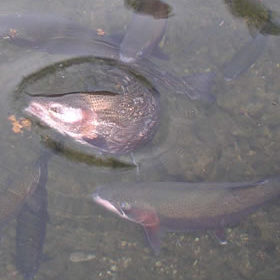
Lunkers in the Roaring River
Yes, the hatchery does release LUNKERS into the roaring river holes. You may not see them, but they do release the big ones on a daily basis. It may only be three or four a day – ask them at the lodge, they’ll give you the percentage – but they are waiting for your lure.
I was fishing in the first hole by the bridge one day, when I saw a giant trout dive deep into the river. I spent several hours working rubber worms, spinner bait, and other attractive lures where I thought the fish was hanging out, to no avail. It was hot out, so I thought I would return in the evening and see if I could lure him out.
I headed back to the hole and started fishing it. Up walks another fisherman with a heavy pole and heavy line. I could see his lure, a big Rapala crawdad. A deep diver, which could easily get snagged at the bottom of the river.
It didn’t. He pulled in the lunker in about ten minutes. I sat there watching, my mouth open. He smiled and wandered away with the fish. Wow. That’s when I decided I’d bring an extra bass fishing pole with me, with heavy 10lb. line, just in case. And a couple of big lures, too. It hasn’t worked out for me yet, but the big fish are there for the catching!
-
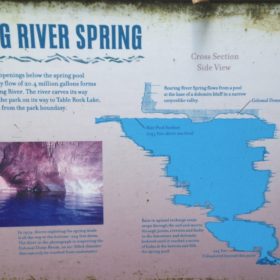
Roaring River State Park Fishing Hours
Roaring River Trout Fishing Hours
Provided by Roaring River State Park
Beginning Time Ending Time March 6:30 a.m.*/7:30 a.m.** 6 p.m.*/7 p.m.** April 7 a.m. 7:30 p.m. May 6:30 a.m. 8:15 p.m. June and July 6:30 a.m. 8:30 p.m. August 7 a.m. 8 p.m. September 7:30 a.m. 7:15 p.m. October 7:30 a.m. 6:30 p.m. * Central Standard Time
** Central Daylight TimeCatch-and-Release Season Beginning Time Ending Time 2nd Friday in Nov. through the 2nd Monday in February
(Friday, Saturday, Sunday and Monday only)8 a.m. 4 p.m. For additional information, please call 417-847-2539.
-
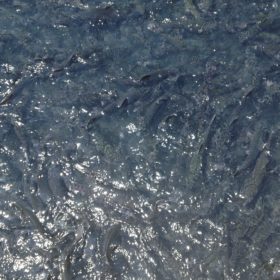
Catch and Release Tips
At the Roaring River, where the trout are hatched to be caught, catch and release isn’t as critical as in small streams where trout numbers seem to be on the decline.
However, if you do want or need to return a caught fish to the river, proper techniques can help ensure the survival of the stunned trout. Here are a few tips:
- Keep the fish in water as long as possible. A fish out of water for more than 30 to 45 seconds may run out of oxygen and die later.
- If you grab the fish by the lower jaw, you can hold it steady while in the water.
- Gently handle the fish. If a fish is dropped to the ground, it will probably not make it.
- Unhook the fish as quickly as you can. Use pliers to speed up the process.
- Never pull a hook out of the fish’s stomach or throat. Break the line instead of messing with it. The fish should get rid of the hook later.
- Revive your fish before release. Cradle the fish in the water, and only let it go after it can strongly swim away from your hands.
If you end up dropping or hurting the fish at Roaring River, just add it to your daily keeper limit stringer and fish on!
-
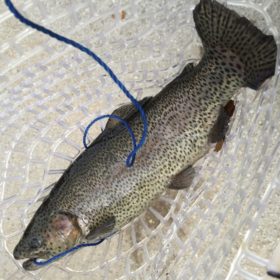
Basic Fly Fishing Tackle
To get started fly fishing, you really only need a few things: Rod, Reel, Line, Leader, and Fly. This, however, is only the beginning, and as you progress, you will add more tools to your fishing arsenal.
The setup of these five elements is based on the fly you will be throwing. If you are after trout, and you know they munch on Mayflies, you know you’ll need to throw smaller line for the smaller fly. To throw smaller line, you’ll need a stiffer rod to cast it, as well as a reel designed for this weight.
This is only a guideline, however. Throwing flies gets easier with new technology in fly fishing.
There is tons of information online for basic fly fishing info. This company has a lot of good advice, so check them out!
So how do you know what setup to start with? You ask! Take an experienced fly fisherman to your local sporting goods store and have him or her explain to you the works. At Roaring River, if you haven’t purchased your gear, start at the new store and ask for their advice. They will certainly help you pick out gear to catch your limit.
I started with a cheap fly rod that came with a reel loaded with line and leader. It worked, and still works, fine. I’ve caught many trout with it. I think it was a Wal-Mart special. Since then, I’ve upgraded to a better rod and reel, but whatever you choose, you will need to practice your casting skills and learn to understand fly fishing to progress in the sport.
You might want to check out a cheap setup like this one, which works for the price. It doesn’t have backing, which really isn’t needed for Roaring River, since the river isn’t too wide. That’s just my opinion, though.
It’s not pretty, and it’s plastic, but it’s a good starter, and it was especially good for my 12-year old to use. It’s an eight foot pole, so not easy for a kid, but it’s cheap enough that if he breaks it, no big deal!
Once you have your rod and reel, and you have your leader and tippet (here is a good site to get information) tied on, you are ready to tie on some flies and get fishing. I recommend heading to Tim’s Fly Shop nearby, and talking to Tim about what is hot, and getting your flies there. He’s an icon in the area and knows his stuff! They also sell flies at the Park Store.
You’ll also need a net, something to hold your gear like a vest or chest pack, or just pockets, and some basic tools like forceps and other miscellaneous gear.
Maybe something like this.
Also, I prefer the rubber net. I’ve had different styles of nets, and when my hook got snagged in the netting, I had to cut it out, leaving holes and taking up many minutes of non-fishing time. It wasn’t pleasant since I’ve switched to the rubber net, it’s been much nicer.
This one is cool since it already comes with a magnet attachment that you clip to your vest or belt, so it’s quick release and keeps your net where you want it.
Whatever you choose, enjoy fishing on Roaring River! Check the map for different zones to really enjoy the river with a fly rod.
-
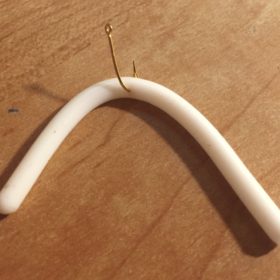
Fishing with Artificial Worms
In Zone 1, feel free to use artificial, rubber worms. You can buy them at the new store, and they work great. Especially after the first fifteen minutes of fishing when the trout are tired of your spinner bait.
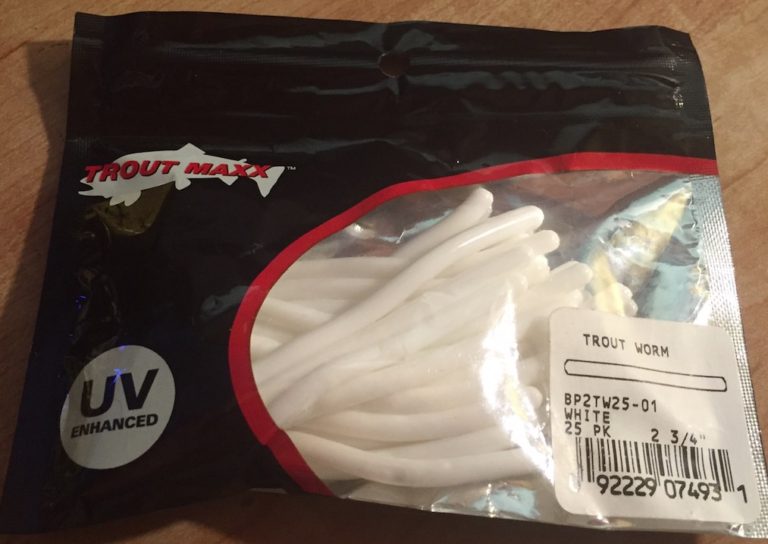
The key is to get a very small trout hook. I use either a size 12 bait hook that you can get in the main store, or even smaller size 16 hooks. Just stick the hook through the worm to form a “U” at the end of your line, and make sure the barb is sticking out of the worm.
Ask at the lodge which colors are working, then buy four or five bags of the rubber lures (they’re cheap) and switch off colors frequently. Work a fishing hole for a while, then if they’re not biting, try a different worm. It’s amazing how the trout will dismiss a yellow one, then grab a red and white striped worm on the next cast.
You can get some trout worms before you head to the river here if you want.The other key to fishing with the worm is floating them. I don’t even use a weight, just the worm as its own weight. Make sure you use an ultra-light fishing pole, and rig it with two to four pound line (or at least a 6 to 8 foot leader of lightweight line), and you’re ready to go. The trout do see the fishing line if it’s too thick, so if you want to catch them, try the 2lb. test line.
Now, with the correct rig, you can cast all the way across the river. Just float it in front of the trout, jig it a little, and you’ll catch them. When they grab the worm, hook them fast. They’ll spit it out if you don’t.
Some people have good luck with a small weight on their line, and pulling/jigging/wiggling the worms through the river, getting the trout’s attention. This works, but personally I’ve had better luck with the floating technique.
-
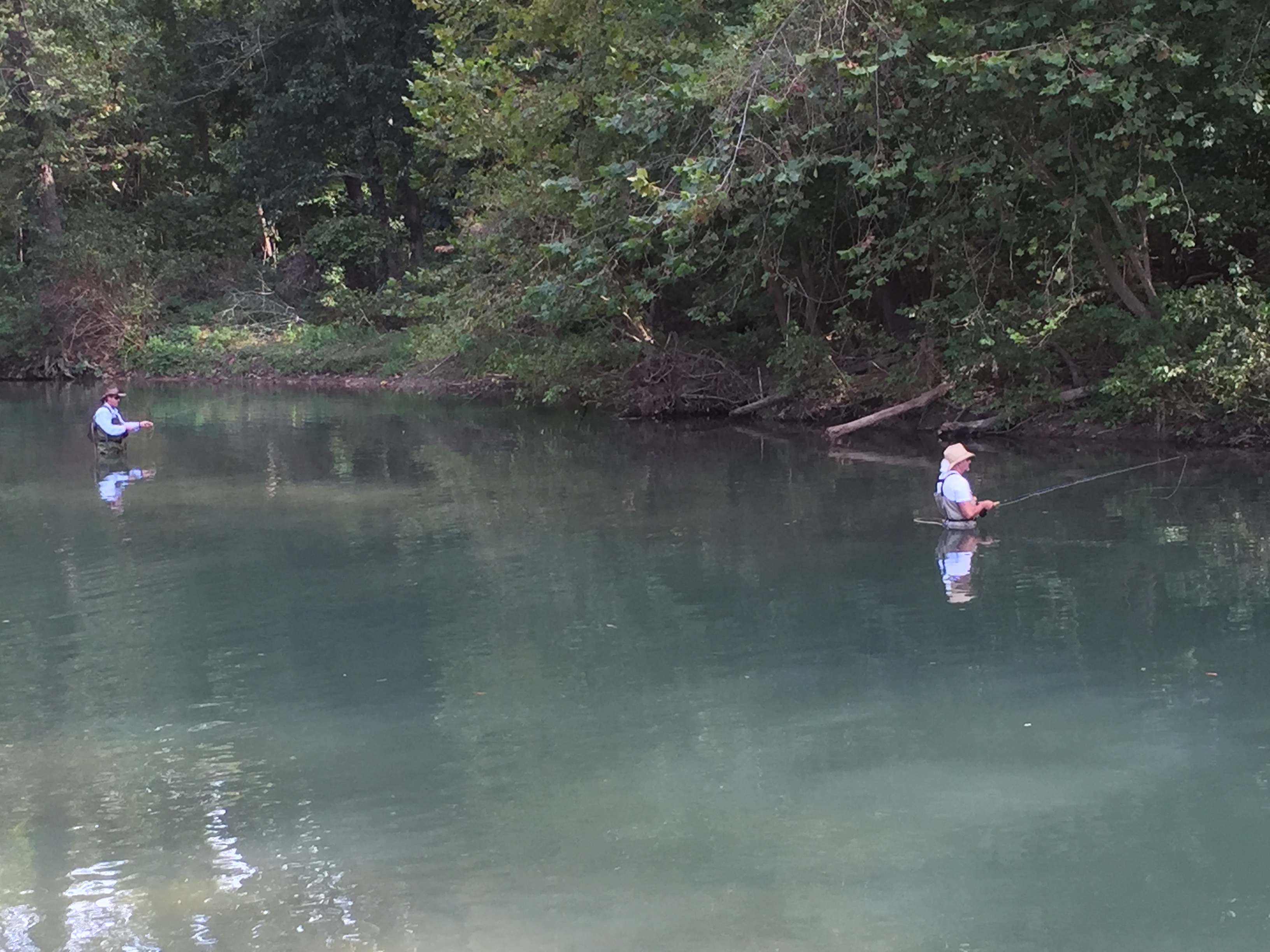
Fishing on the Roaring River in the Ozarks – Missouri
The Roaring River emerges from an icy spring, providing the perfect habitat for Rainbow Trout hatched for release. The Missouri Department of Conservation stocks the river, so from your first visit to the river you will be able to see the trout swimming in the clear water.
Crystal River Fly Fishing Combo Kit
To catch them, however, you will need a Missouri Fishing License, as well as a daily tag available at the new store just down the road toward the Emory Melton Inn.
The Roaring River State Park store is the place to get started. Regardless if you are fishing with an ultralight rod and reel, or a fly rod, learn a few tricks and you will catch your limit in no time.
Choose some articles to learn more about fishing on the beautiful Roaring River. Pretty soon you’ll be HOOKED, tying your own flies and fly fishing like a pro.
Here are the regulations according to Missouri State Parks:
• Trout fishing is permitted in accordance with the state wildlife code and posted restrictions daily from March 1 through Oct. 31, and during the winter catch-and-release season from the second Friday in November to the second Monday in February on Friday, Saturday, Sunday and Monday only.
• Each angler shall display a daily trout tag purchased on the area and bearing his or her signature.
• Each angler shall have a state fishing permit except those 15 years and younger or Missouri residents 65 years and older.
• Each angler shall keep their trout separate at all times and identified with their name and address.
• Daily limit is four, all brown trout must be equal to or greater than 15”. There is no length limit on rainbow trout. Possession limit is 8 trout.
• Only a single pole or rod may be used. Gigging, snaring or snagging is not permitted.
• No person shall continue to fish for any species in these trout waters after having four trout in possession.
• The use of game fish or parts thereof for bait is prohibited; chumming is not permitted.
• No trout may be possessed in the catch-and-release area.

